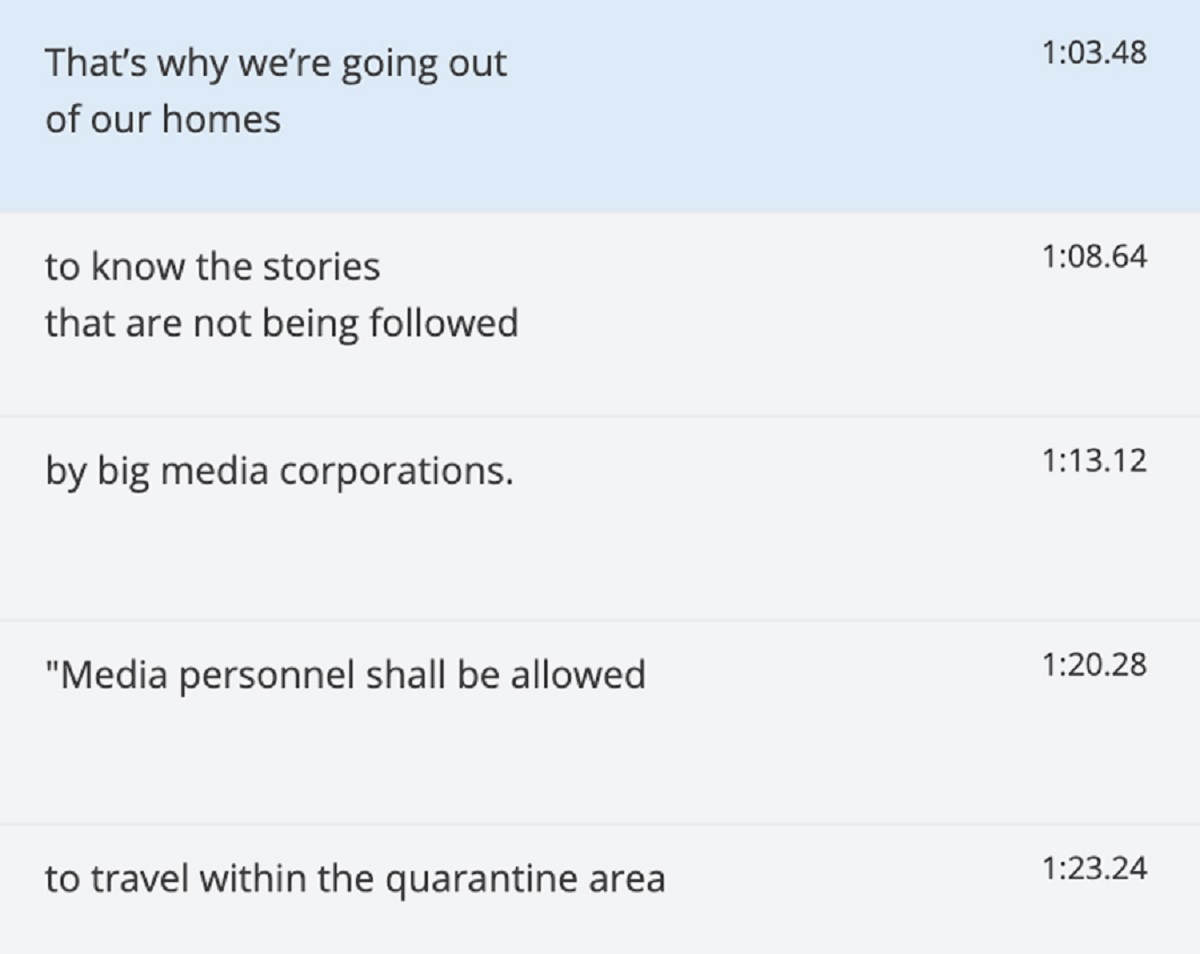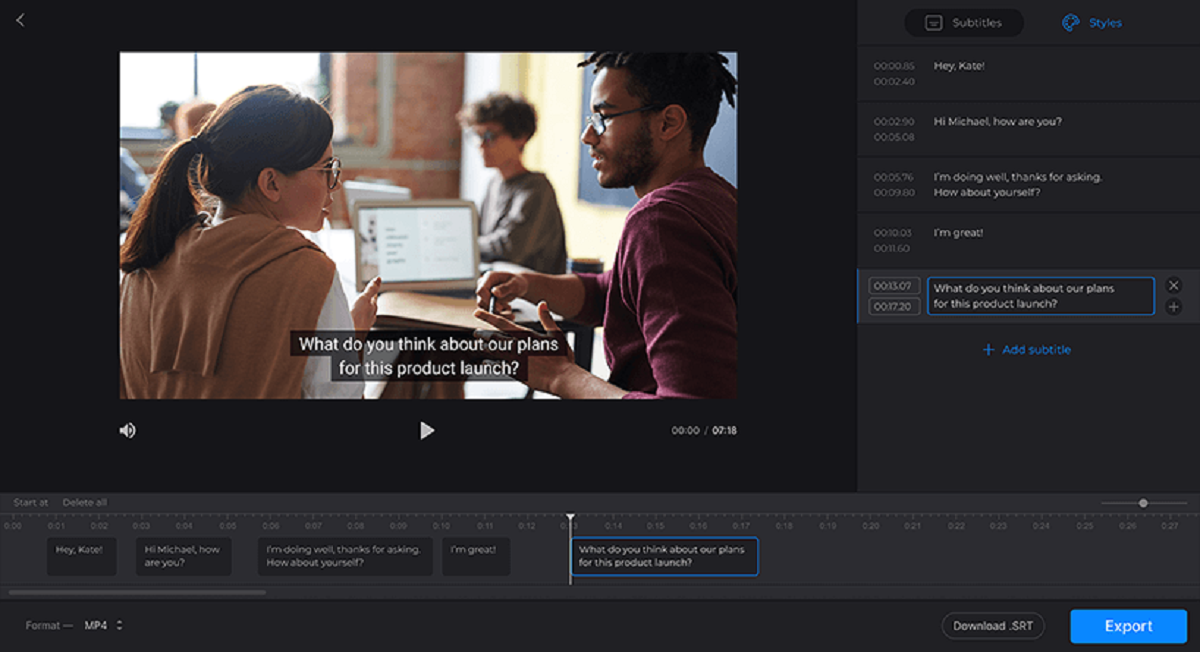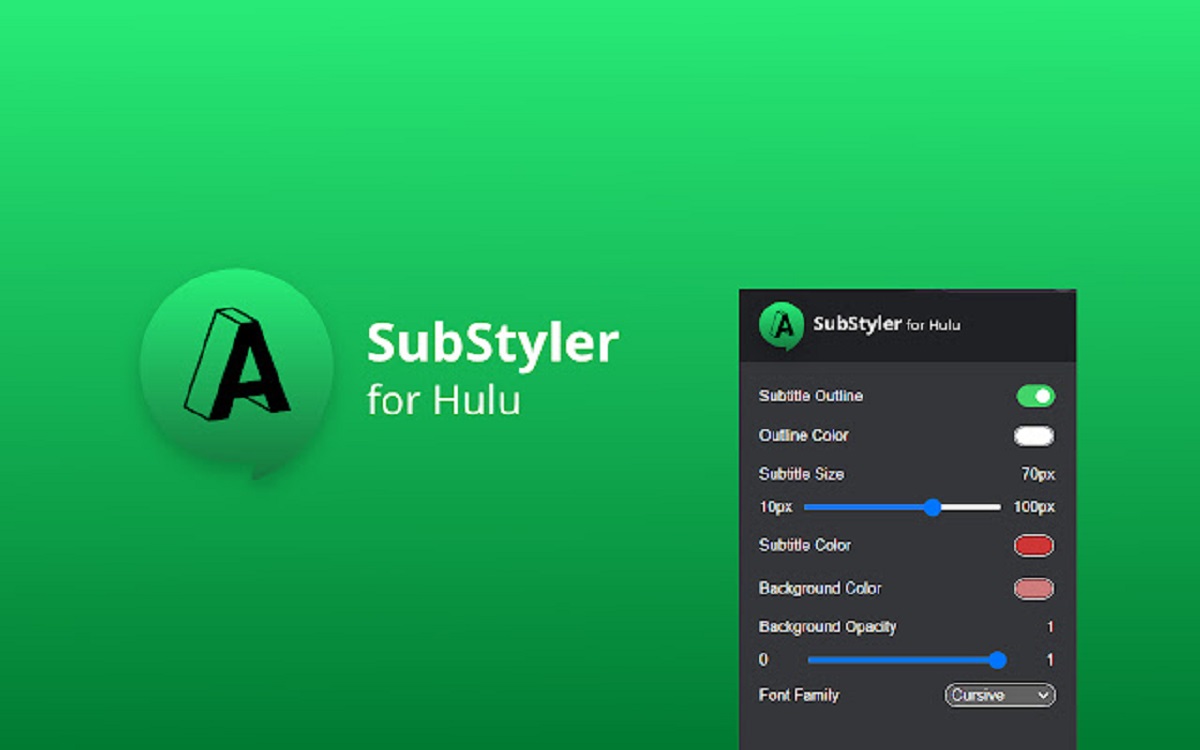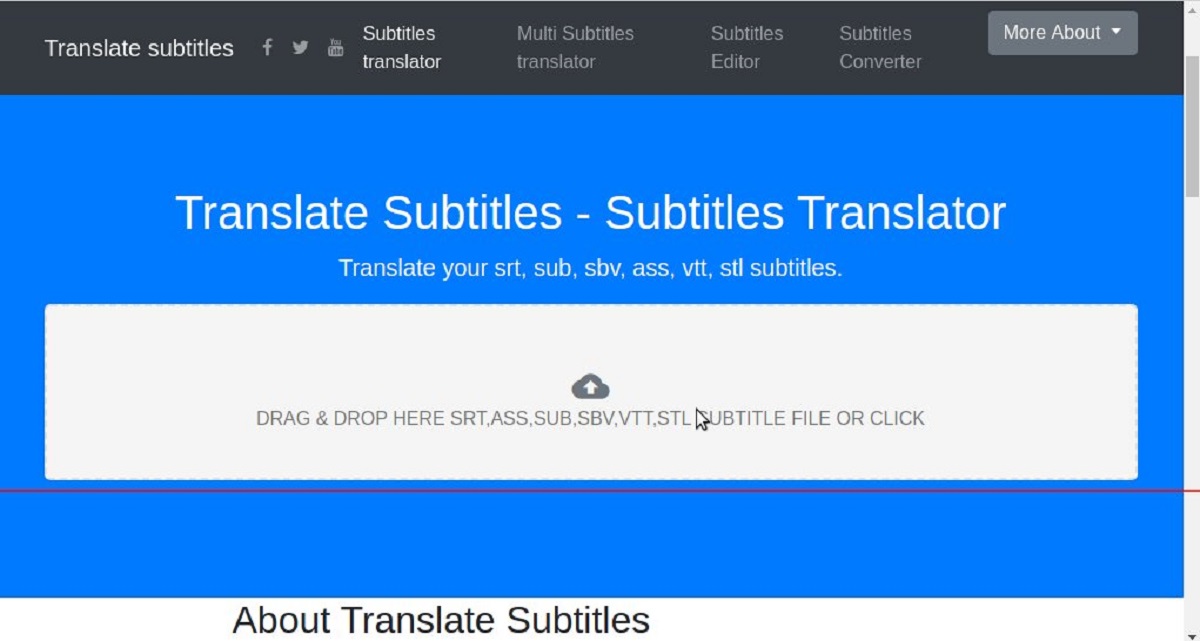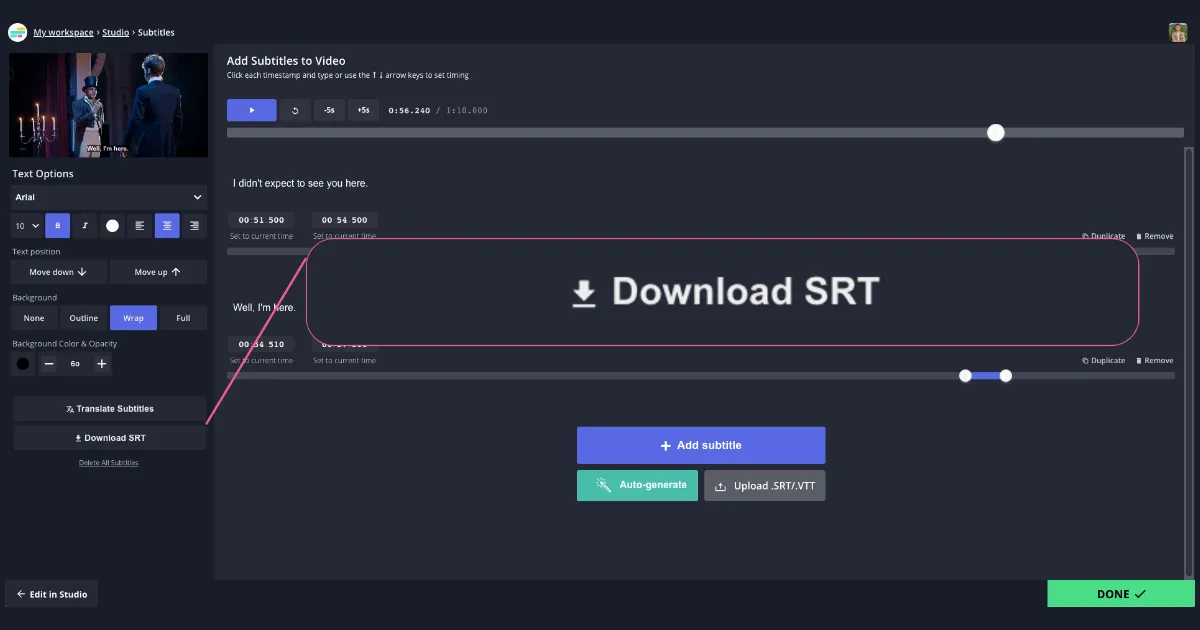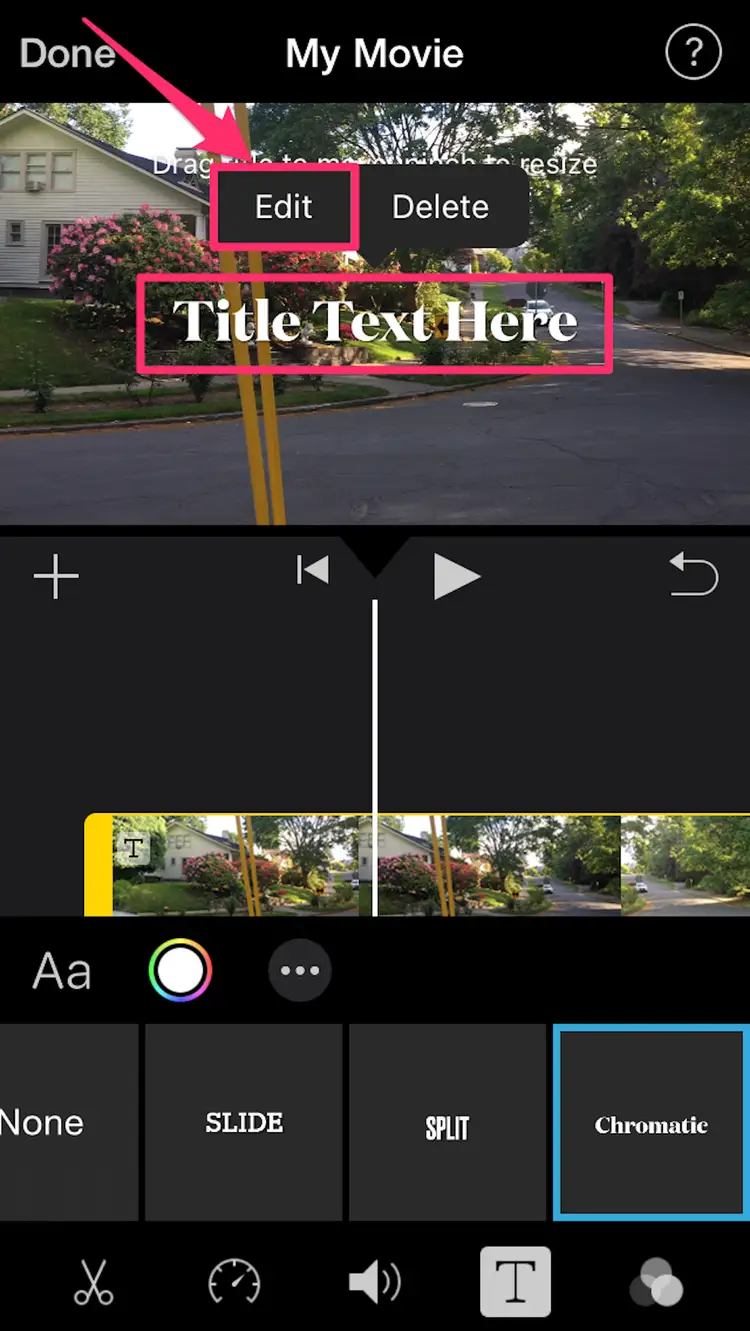Introduction
In today’s digital age, subtitles play a crucial role in enhancing the accessibility and enjoyment of various forms of media. Whether it’s a movie, TV show, or online video, subtitles provide a means for viewers to understand and engage with the content. However, one important aspect of creating effective subtitles is determining the optimal duration for displaying them on screen.
Subtitle duration refers to the amount of time that a subtitle is displayed before transitioning to the next one. Finding the right balance between displaying subtitles for an adequate period and not overwhelming the viewer can significantly impact the overall viewing experience. To achieve this balance, several factors need to be taken into consideration.
First and foremost, the average reading speed and comprehension of the target audience are important factors to consider when deciding subtitle duration. Individuals differ in their reading abilities, and what may be comfortable for one person may be challenging for another. It is crucial to ensure that the subtitle duration allows viewers to read the text comfortably and comprehensively absorb the information being conveyed.
Another factor that influences subtitle duration is the nature of the content itself. Different types of media vary in their pacing and complexity. For instance, a fast-paced action scene in a movie may require shorter subtitle durations to keep up with the on-screen events, while a dialogue-heavy drama may benefit from longer durations to allow the audience to fully grasp and absorb the conversations.
Context is also a significant factor in determining subtitle duration. The context of the scene, the emotions being portrayed, and the importance of the dialogue all play a role in deciding how long subtitles should be on screen. For example, a humorous punchline may need a slightly longer duration to allow viewers to fully comprehend and appreciate the joke.
Furthermore, different languages may require adjustments in subtitle duration. Languages with longer words or complex sentence structures may necessitate shorter durations to ensure that the text is not cut off or displayed in a cramped manner. On the other hand, languages with shorter words and simpler sentence structures may allow for longer durations without compromising readability.
Effective subtitle duration is crucial for creating a seamless and immersive viewing experience. When subtitles are timed correctly, they become an invaluable tool for inclusivity and accessibility, allowing individuals with hearing impairments or those who are learning a new language to fully engage with the content. Additionally, well-timed subtitles can enhance the overall comprehension and enjoyment of the media for all viewers.
In the following sections, we will explore how to determine the optimal subtitle duration, taking into account various factors such as reading speed, content complexity, and language differences. By following these guidelines and tips, you can ensure that your subtitles are both visually pleasing and effectively convey the intended message.
Factors to consider when deciding subtitle duration
When determining the appropriate duration for displaying subtitles on screen, it is important to consider several factors that can impact the viewer’s experience. By taking these factors into account, you can ensure that your subtitles are well-timed and enhance the overall accessibility and enjoyment of the content.
1. Average reading speed and comprehension: Individuals have varying reading speeds and comprehension abilities. It is essential to consider the target audience and ensure that the subtitle duration allows enough time for viewers to comfortably read and understand the text. Accounting for the average reading speed of your target audience is crucial for providing a seamless viewing experience.
2. Nature of the content: Different types of media have varying pacing and complexity. For fast-paced action scenes, shorter subtitle durations may be necessary to keep up with the on-screen events. In contrast, dialogue-heavy scenes may require longer durations to allow the audience to fully absorb and comprehend the conversations. Analyzing the content and considering its tempo and complexity will guide you in determining the appropriate subtitle timing.
3. Context of the scene: The context in which subtitles appear plays a significant role in deciding their duration. Emotional moments, important dialogues, or punchlines may require slightly longer durations to allow viewers to fully grasp and appreciate the content. Contextual cues within the scene can help you determine when to adjust the subtitle duration for better viewer understanding and engagement.
4. Language differences: Different languages have distinct characteristics, such as word lengths and sentence structures, which can impact subtitle duration. Languages with longer words or complex sentence structures may necessitate shorter durations to prevent the text from being cut off or displayed in a cramped manner. Conversely, languages with shorter words and simpler structures may allow for longer durations without compromising readability.
5. Accessibility and inclusivity: Subtitles serve as a crucial tool for inclusivity, allowing individuals with hearing impairments or those learning a new language to fully engage with the content. By prioritizing accessibility, you ensure that your subtitles are synchronized with the audio and provide adequate time for everyone to follow along effortlessly.
6. Feedback and testing: Regularly gathering feedback on your subtitles and conducting viewer testing can provide valuable insights into the effectiveness of the subtitle duration. Analyzing audience responses and making adjustments based on their feedback will help you refine your subtitle timing strategy and improve the overall viewing experience.
By considering these factors, you can optimize the subtitle duration for enhanced comprehension, engagement, and accessibility. Tailoring each subtitle’s timing to the specific context and needs of the viewers will contribute to a seamless and enjoyable viewing experience.
Average reading speed and comprehension
When determining the duration for displaying subtitles on screen, one crucial factor to consider is the average reading speed and comprehension of the audience. People read at different rates, and accommodating their reading abilities ensures that the subtitles are effective in conveying the intended message.
Reading speed can vary depending on several factors, including language proficiency, familiarity with the subject matter, and cognitive processing abilities. Research indicates that the average adult reading speed ranges from 200 to 300 words per minute (wpm). However, it’s important to note that reading speed can vary significantly from person to person, with some individuals reading faster or slower than the average.
To determine the optimal subtitle duration, it’s essential to strike a balance. If the subtitles appear on the screen for too short a time, viewers may not have enough time to read and comprehend the text fully. On the other hand, if subtitles remain on the screen for too long, viewers may feel that the text lingers unnecessarily and disrupts the flow of the content.
It is recommended to maintain a subtitle duration that allows the majority of viewers to comfortably read the text without feeling rushed. A general rule of thumb is to aim for a reading speed of around 150 to 180 wpm for subtitles. This range provides sufficient time for viewers to read the subtitles while keeping up with the on-screen action or dialogue.
In addition to reading speed, it is vital to consider the target audience’s comprehension abilities. Understanding and processing the information conveyed by subtitles goes beyond merely reading the text. Factors such as language proficiency, familiarity with the content, and cognitive capacity influence the ability to comprehend the subtitles accurately.
When creating subtitles, it is crucial to use clear and concise language that is easy to understand. Avoid long and complex sentences that may overwhelm viewers or require additional time to comprehend. By using simple and straightforward language, you ensure that viewers can quickly grasp the meaning of the subtitles and fully absorb the content.
However, it’s also important to strike a balance between readability and accurately conveying the original meaning. Simplifying the language too much may result in losing the nuances or subtleties of the dialogue. Aim to find a middle ground that maintains readability while preserving the intended message.
Overall, considering the average reading speed and comprehension of the target audience is crucial for determining the optimal subtitle duration. By finding the right balance, you can create subtitles that are easily readable, comprehensible, and seamlessly integrated into the viewing experience.
Determining the optimal subtitle duration
When it comes to determining the optimal duration for displaying subtitles on screen, there are several approaches and techniques that can help ensure an effective and enjoyable viewing experience. By considering various factors and implementing best practices, you can find the right balance between providing adequate time for viewers to read the subtitles and maintaining the overall flow of the content.
1. Test and adjust: One effective method is to conduct tests and gather feedback from a sample audience. Show the content with different subtitle durations and collect input on readability, comprehension, and overall satisfaction. Analyzing the feedback will provide valuable insights and help you refine the duration to meet the viewers’ needs.
2. Consider reading speed: As mentioned earlier, the average reading speed falls within the range of 150 to 180 words per minute. However, it’s essential to consider the specific language and target audience. Take into account any variations in reading speed and adjust the subtitle duration accordingly.
3. Use shorter durations for faster-paced content: If the media content is fast-paced, such as action sequences or rapid dialogue exchanges, shorter subtitle durations may be more appropriate. This ensures that viewers can keep up with the on-screen events without feeling overwhelmed by the subtitles.
4. Allow longer durations for complex or dialogue-heavy content: In contrast, content that contains complex concepts or dialogue-heavy scenes may benefit from longer subtitle durations. This allows viewers to fully absorb and comprehend the information being conveyed without feeling rushed or missing crucial details.
5. Break down subtitles when necessary: If a subtitle contains a long sentence or multiple ideas, consider breaking it down into shorter segments. This approach gives viewers more digestible chunks of text to read and prevents the subtitles from appearing crowded or overwhelming.
6. Pay attention to visual cues: During the editing process, pay attention to visual cues, such as the movement of characters or significant changes in scenes. Sync the timing of the subtitles with these cues to ensure a seamless integration with the content and avoid any disjointed or distracting display of subtitles.
7. Allow for reaction time: If the subtitles accompany moments that require an emotional or visual reaction from the viewers, it is essential to provide enough time for them to process the scene and then read the subtitles. Adjusting the duration accordingly allows viewers to fully experience the intended impact of the scene.
8. Be flexible based on viewer feedback: Continually gather feedback and monitor viewer responses to your subtitles. A particular duration that works well for one piece of content may not work as effectively for another. Stay open to making adjustments and refinements based on the specific needs and preferences of your target audience.
By implementing these strategies, you can determine the optimal subtitle duration that strikes a balance between readability, comprehension, and overall viewer satisfaction. Remember that finding the right duration requires a combination of testing, analysis, and a keen understanding of the content and target audience.
Adjusting subtitle duration for different languages
When it comes to subtitling content in different languages, it’s important to consider the unique characteristics of each language and make appropriate adjustments to the subtitle duration. Different languages have distinct features such as word lengths, sentence structures, and reading speeds, which can significantly impact how subtitles are displayed.
1. Word lengths and sentence structures: Some languages, like German or Finnish, tend to have longer words compared to languages like English or Spanish. As a result, subtitles in these languages may require shorter durations to prevent the text from being cut off or appearing cramped on the screen. On the other hand, languages with shorter words and simpler sentence structures may allow for longer subtitle durations without sacrificing readability.
2. Reading speed: Each language has its own average reading speed, which affects how quickly viewers can read and comprehend subtitles. For example, languages like Japanese and Chinese often have faster reading speeds compared to other languages. Consider adjusting the subtitle duration to accommodate the specific reading speed of the target language to ensure viewers have enough time to comfortably read and understand the subtitles.
3. Syntactic differences: Syntactic differences between languages can impact how subtitles are structured and displayed. Some languages invert the subject-verb-object order, which may require the subtitles to be adjusted for better readability. Additionally, languages with grammatical cases or other unique linguistic features may necessitate shorter durations to avoid confusion or the text becoming visually overwhelming.
4. Cultural considerations: Cultural differences can also influence subtitle duration. Certain languages, such as Japanese or Chinese, focus on brevity and concise expression, which may require shorter subtitle durations to align with their communication style. Understanding the cultural nuances of the target language helps in determining an appropriate subtitle duration that aligns with the language’s conventions and norms.
5. Viewer preferences and expectations: Consider the audience’s preferences and expectations when adjusting subtitle duration for different languages. Some viewers may be accustomed to faster-paced subtitles, while others prefer slightly longer durations for better comprehension. Taking into account regional expectations and viewer feedback ensures that the subtitles align with the linguistic and cultural norms of the target audience.
6. Quality control and feedback: Regular quality control measures, including viewer testing and feedback, are essential when adjusting subtitle duration for different languages. Collect feedback from native speakers and target language viewers to assess readability, comprehension, and overall satisfaction with the subtitles. This feedback helps refine subtitle timing to ensure the best possible viewing experience.
By considering these factors and adjusting the subtitle duration based on the unique characteristics of each language, you can create subtitles that are visually appealing, easy to read, and accurately convey the message in different linguistic contexts. Adapting to the specific needs and conventions of each language ensures that the subtitles seamlessly integrate with the content, regardless of the target language.
Importance of context and content complexity
When determining the optimal duration for displaying subtitles, it is essential to consider the context of the scene and the complexity of the content being presented. The context and content complexity play a crucial role in determining the appropriate duration to ensure that viewers can fully comprehend and engage with the subtitles.
1. Context of the scene: The context in which subtitles appear significantly impacts their duration. Certain moments in a movie or TV show may require longer durations to allow viewers to fully grasp the emotions, intentions, or nuances being portrayed on-screen. Whether it’s a dramatic pause, a suspenseful moment, or a subtle visual cue, adjusting the subtitle duration within the context of the scene helps enhance the overall viewing experience.
2. Content complexity: Different types of content vary in terms of complexity. Some media may contain intricate plotlines, scientific concepts, or technical terms that require more time for viewers to understand. Subtitles for such content may benefit from longer durations to allow viewers to absorb the information fully. On the other hand, simpler content may require shorter durations to maintain a smooth flow without overwhelming the viewer with excess reading time.
3. Emotional impact: Emotional moments in the content can influence the subtitle duration. Scenes that evoke strong emotions, such as love, loss, or humor, may benefit from slightly longer durations to allow viewers to fully absorb and process the sentiments conveyed through the dialogue or actions on-screen. Adjusting the subtitle duration to align with the emotional impact ensures that viewers can connect with and appreciate the content more deeply.
4. Visual cues and action: Paying attention to visual cues and the level of on-screen action is essential for determining subtitle duration. In scenes with intense action or rapid movements, shorter subtitle durations may be necessary to keep up with the visual pace. Matching the timing of the subtitles with the on-screen actions helps maintain the cohesiveness of the content and ensures that viewers can fully engage with both the visuals and the subtitles.
5. Maintaining readability: While considering context and content complexity, it’s crucial to ensure that the subtitles remain easily readable. Subtitles should be displayed long enough for viewers to read comfortably without having to rush through the text. Striking a balance between duration and readability is key to providing a positive viewing experience and allowing viewers to engage with the subtitles effortlessly.
By assessing the context of the scene and understanding the complexity of the content, you can determine the appropriate subtitle duration to enhance viewers’ comprehension and enjoyment. Adapting subtitle duration based on these considerations ensures that the subtitles effectively convey the intended message, capture the emotional nuances, and seamlessly integrate with the visual elements of the content.
Tips for effective subtitle duration
When creating subtitles, finding the right balance for the duration is crucial to ensure their effectiveness and enhance the overall viewing experience. Here are some tips to help you determine the optimal subtitle duration:
1. Consider the reading speed: Take into account the average reading speed of your target audience and adjust the subtitle duration accordingly. Strive to provide enough time for viewers to comfortably read the subtitles without feeling rushed or overwhelmed.
2. Adapt to the content: Adjust the subtitle duration based on the nature of the content being presented. Fast-paced scenes may require shorter durations to keep up with the on-screen action, while dialogue-heavy segments may benefit from longer durations to allow viewers to fully grasp the conversations.
3. Utilize visual cues: Sync the timing of the subtitles with significant visual cues, such as character movements or scene transitions. This ensures that the subtitles are seamlessly integrated into the content and do not appear disjointed or distracting.
4. Break down long sentences: If a subtitle contains a long sentence or multiple ideas, consider breaking it down into shorter segments. This allows viewers to read and comprehend the information more easily, preventing the text from appearing crowded or overwhelming.
5. Be aware of language differences: Take into account the characteristics of different languages, such as word lengths and grammar structures, when determining subtitle duration. Languages with longer words or complex sentence structures may require shorter durations, while languages with shorter words may allow for longer durations.
6. Gather feedback: Regularly seek feedback from viewers and native speakers of the target language to understand their experience with the subtitles. Analyze their responses and make necessary adjustments to improve the subtitle duration and readability.
7. Prioritize readability: Ensure that the subtitles remain easily readable throughout the entire duration they are displayed. Use clear and concise language, avoid excessive on-screen clutter, and maintain an appropriate font size and style to optimize readability.
8. Test and refine: Conduct tests and viewer screenings to fine-tune the subtitle duration. Observe how viewers engage with the content and gather feedback on their comprehension and overall satisfaction. This iterative process helps refine the subtitle timing for optimal effectiveness.
By considering these tips and implementing them in your subtitle creation process, you can ensure that the duration is optimized for readability, comprehension, and an immersive viewing experience. Tailoring the subtitles to suit the needs of your target audience will elevate the accessibility and overall enjoyment of the content.
Conclusion
When it comes to creating subtitles, finding the optimal duration is key to enhancing the accessibility and enjoyment of the content. By considering factors such as average reading speed, content complexity, language differences, and contextual cues, you can determine the best subtitle duration for a seamless viewing experience.
Understanding the average reading speed and comprehension of your target audience is crucial for providing subtitles that can be comfortably read and comprehended. Adjusting the duration based on the nature of the content, whether it’s fast-paced action or dialogue-heavy scenes, ensures that viewers can keep up without feeling overwhelmed.
Context and content complexity play significant roles in subtitle duration. Adapting to emotional moments, impactful visual cues, and the level of scene complexity helps create subtitles that are synchronized with the on-screen content and evoke powerful viewer engagement.
Language differences, including word lengths, sentence structures, and reading speeds, require adjustments in subtitle duration. Taking these linguistic nuances into account helps cater to the specific needs of each language’s audience and ensures readability without sacrificing accuracy.
Addtionalyy, implementing tips such as utilizing visual cues, breaking down long sentences, prioritizing readability, gathering feedback, and conducting tests allow for continuous improvement in subtitle duration and overall quality.
By following these guidelines and considering the various factors at play, you can create subtitles that are effective, visually pleasing, and comprehensive. Well-timed subtitles enhance accessibility, inclusivity, and viewer engagement across different languages and content types. Striking the right balance between timing and readability ensures that subtitles seamlessly integrate with the content, providing an immersive and enjoyable viewing experience for all.







